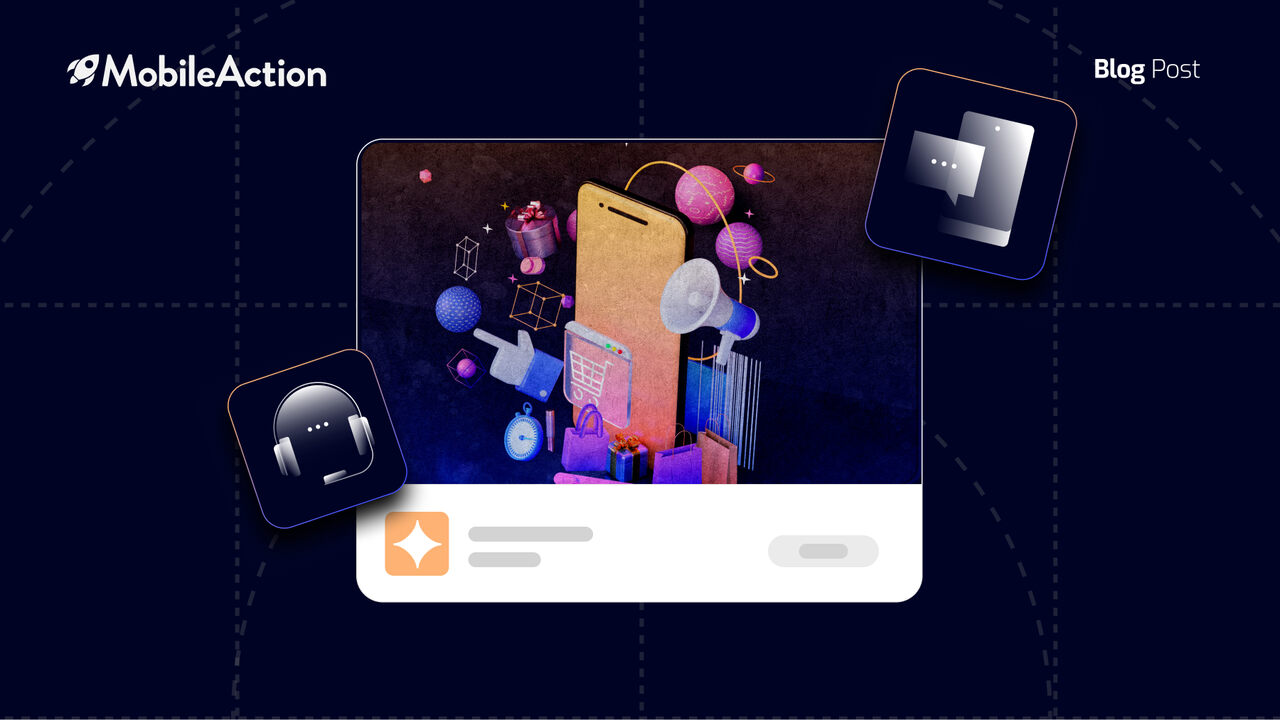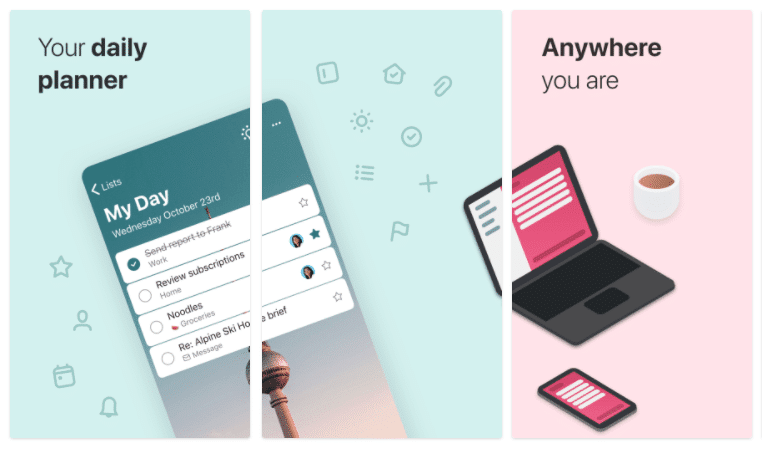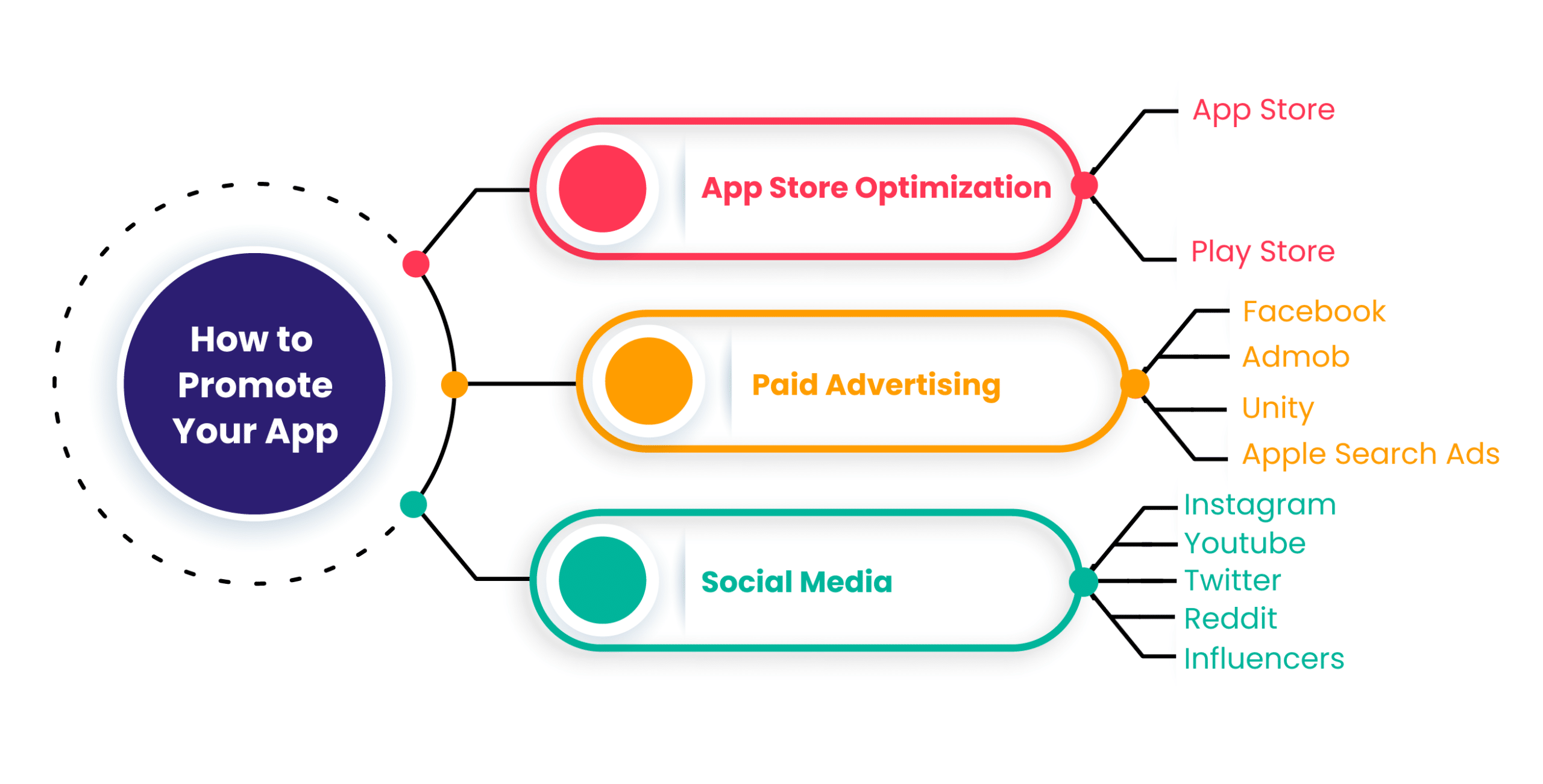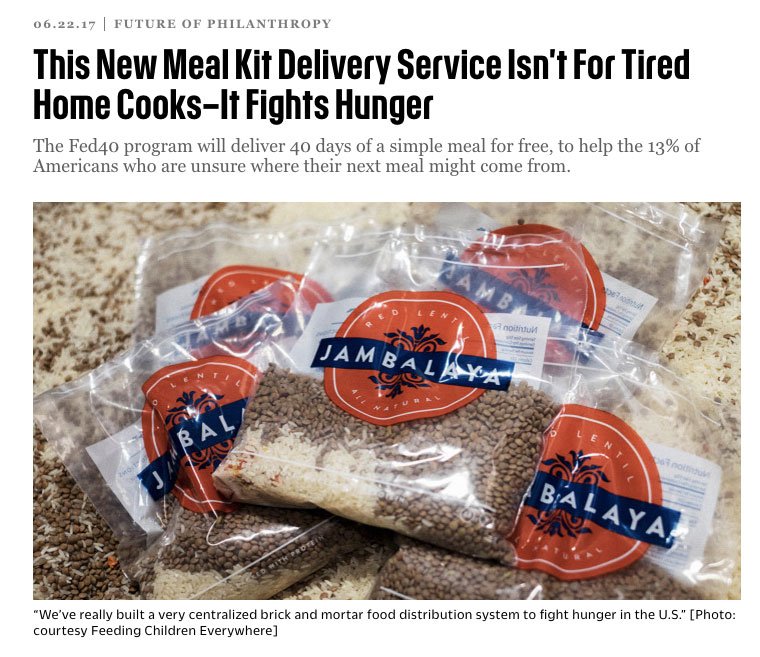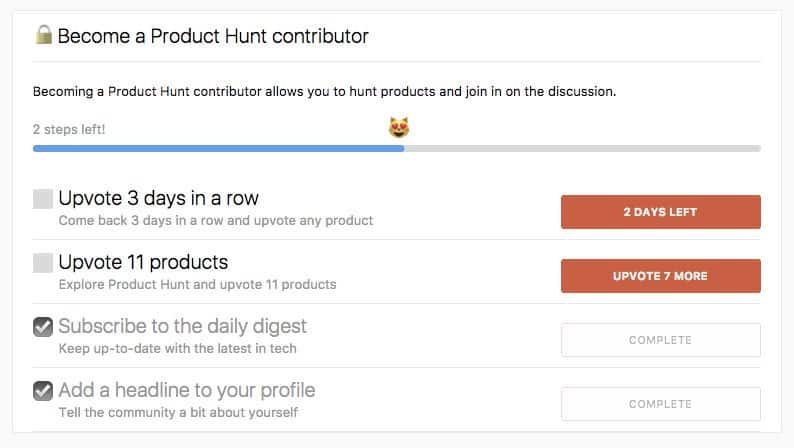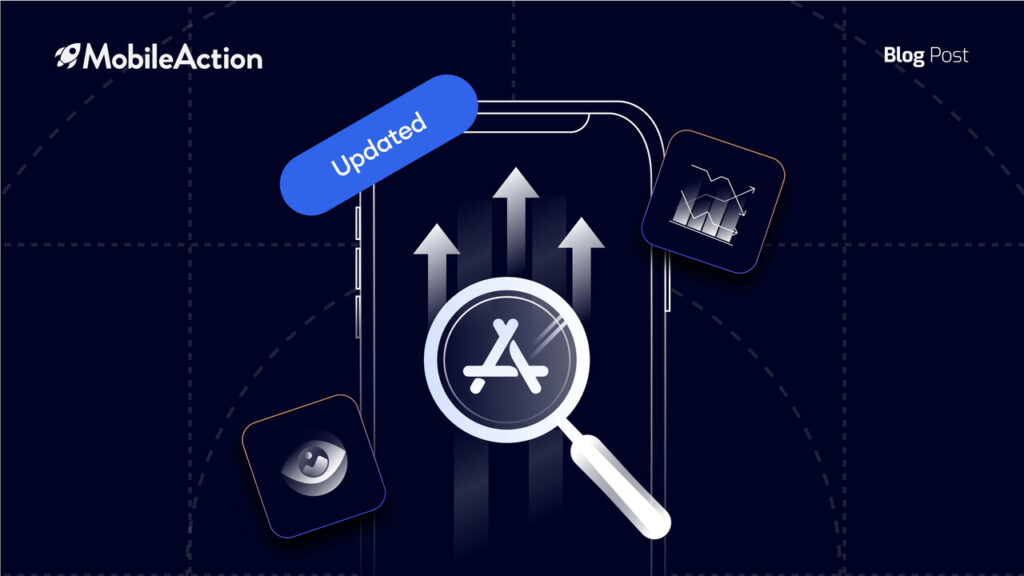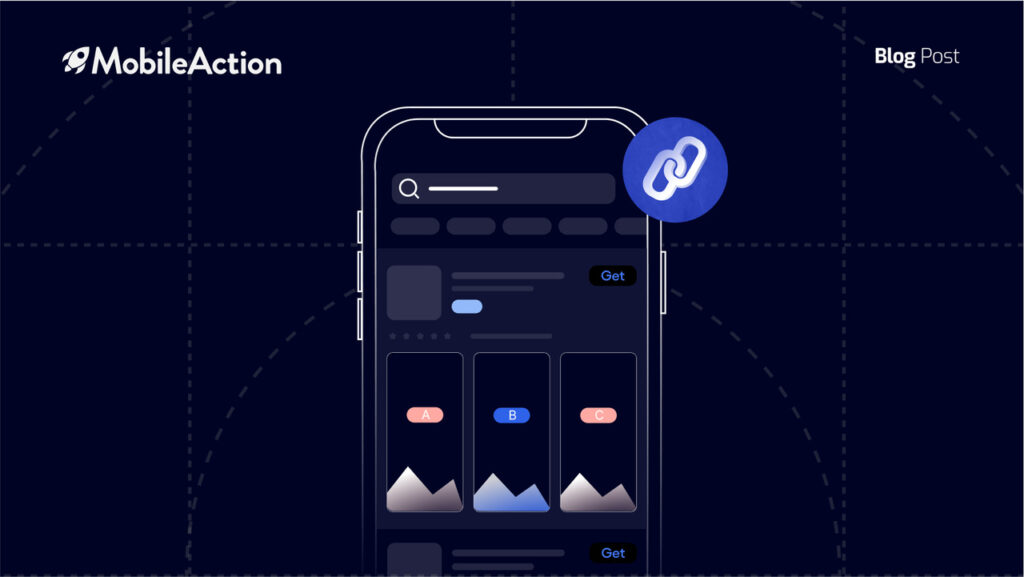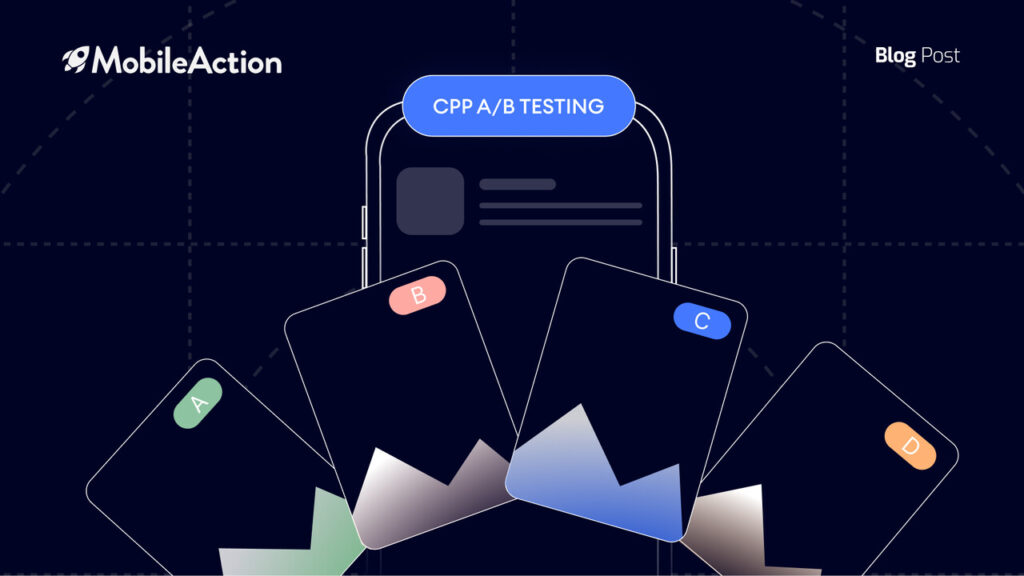How do I promote my app?
This is a question that is frequently asked. But it is a really hard question to answer because there are so many different ways when it comes to how to promote your app.
On top of that, you have a limited amount of time and need to focus your efforts on the things that are going to move the needle for you.
We have been in the app marketing industry for a long time and have helped many apps find success, previously as consultants, and now as data platform providers. So we created this comprehensive app marketing guide to help you promote your apps or gear up your marketing engine for a new app.
For each strategy, we will tell how to execute the strategy, give you examples of the strategy in action (when possible) and tell you what type of app publisher it will help most.
This guide will help you if you have an App Store iOS app or a Play Store Android app.
We will do our best to update this guide periodically, but if you see something that is missing, feel free to contact us and let us know.
Effective Marketing Starts With a Quality App
Before we get into specific marketing strategies, great marketing always starts with a quality app, that fills a need in the marketplace.
If you don’t have a great app that people want, then no amount of marketing is going to help you no matter how much you promote your app. Once people download a low-quality app, they figure out very quickly that the app is not what they are looking for and they will uninstall it.
…and maybe even leave a negative review.
Of course, you have to strike a balance between creating a great app and actually shipping features. But your focus should always be on making your users happy, otherwise, the following strategies won’t matter.
App Store Optimization
App Store Optimization is one of the most efficient ways to get new users, but it does take some effort to create a solid strategy. The most common mistake that app publishers make is to give up on ASO too early. While most app publishers want to promote their app instantly, the truth couldn’t be farther from that.
No matter what type of marketing strategy you use to promote your app, all of them require you to be patient and you will build your marketing strategy on solid ground.
Here are the primary elements of ASO and what you need to know to get started. If you need more information, check out our ASO Guide for further details.
Keywords
The first thing that you have to do in ASO is to pick the right keywords. Keywords need to be selected based on the following criteria:
- Download relevance: Even if a keyword is related to your app, is it a keyword that someone will type into the search box to find an app like yours? If you don’t select keywords with “download intent” you will wonder why you aren’t getting any additional downloads, even when you rank well for those keywords.
- Ranking difficulty: Can your app rank for the keywords you just selected? That is the next step in the keyword selection process. Our Chance helps you figure out if your app has a good shot at ranking for the keyword. It’s better to rank well for a less popular keyword than to rank poorly for a very popular keyword.
- Search traffic: How much search volume does the keyword get? Our Volume integrates actual search volume data from Apple (in countries where that is available) and uses our proven algorithm for times when that data is not directly available. This should be the last criteria that you should consider.
Once you select the right keywords, then integrate them into the areas of your app where they matter most.
For iOS:
- App Title
- App subtitle
- Keyword field
For Google Play:
- App title (name)
- Short description
- Long description
Be sure to track your keywords and periodically replace the keywords that you are not ranking for in the top 10.
App Name
Once you choose the right keywords, that makes it easier to choose the right name for your app. If you already have an app name/title, you can always update it with your newly found keywords.
The app stores have greatly restricted the number of characters that you can use in your app name, so it might be hard to fit a keyword in your app name. But if you can do it, the keywords in your app name will have the greatest weight.
Aside from adding keywords to your app name, you also need to take the time to select a keyword that makes sense, for your type of app. There can be a tendency to get a little too “creative” when choosing an app name, so even if you are convinced that a name is the right one, take a few days to let it settle in before you make a final decision.
Obviously, you are free to choose any name you want. But we would suggest taking some time to consider carefully.
App Icon
The next most important ASO factor is your app icon. After people find your app through a keyword search, the next thing that they will look at is your app icon.
Your icon needs to be simple and people need to be able to easily understand what your app does. If you lack the design skills to create an icon, find a freelancer to do it for you.
First of all, colors are important. Rather than boring colors, a bright and attention-capturing choice of color might be more effective. Do not overcomplicate your logo. You should not trade clarity for complexity when the problem is how to advertise your app. One way to do this is to avoid using too much text.
Another important point is to set yourself apart. Your logo should stand out from competing logos. Improving your app icon is one of the best ways to improve your conversion rate on the app stores. Treat it accordingly.
For more app icon design resources and ideas, check out our article on the power of creative assets.
Screenshots / Video
After your app icon, your screenshots and video are going to have the next biggest impact on your app store conversion rate.
One way that apps are making their screenshots stand out is with “continuation” screenshots, like the ones pictured above.
They use the same basic principles of screenshot design that have worked well in the past, but they have made them a little more interesting by connecting the panes together. Regardless of what you use, test out your screenshots and measure the results.
Description
The keywords in your app description on the App Store don’t factor into your keyword rankings. Still, writing a good description is crucial for high conversion rates. By stating the value propositions of your app clearly and concisely, you will increase your chances of receiving installs.
However, the keywords in your Play Store app description are very important to your keyword rankings and you need to be sure to optimize the keywords in your long and short description.
Regardless of the keywords in the description being used or not, your description is your last chance to convince a person to download your app. So tell people how good your app is by mentioning awards you have received and what people are saying about your app.
App Reviews
App Ratings and reviews are an important factor in helping potential users decide if they should download their app or not.
To get some strategies on how to increase the volume of ratings your app gets and decrease the number of negative ratings, read this case study.
That case study does a great job of breaking down the thought process that the app publisher went through to get their average rating up to the level where it belonged. In the Google Play Store, reviews & ratings are also indexed, making them crucial for increasing/maintaining your organic rankings. This is yet another factor that separates Android App marketing. If you are looking to promote Android app, you should pay attention to the current specifications of the platform.
App Store Optimization Guides
To learn more about how to get started with ASO, read our complete guides:
- App Store Optimization for iOS Apps
- App Store Optimization for Google Play Android Apps
- A Complete Guide for App Store Optimization ASO
Do Review Mining
Our statistics show that only about 3% of an app’s user base will actually leave a review. So you will need a lot of reviews to gather any meaningful information about your app.
Review Mining can be a great way to survey your audience…without actually sending out a survey. By doing keyword searches in user reviews, you can learn things like:
Developer feedback in comments delivers the message that the app is actively maintained and UX is trying to be kept optimal.
In the Play Store, reviews are also indexed for keywords, making them even more important.
You can discover these things in the reviews of your app and the reviews of competing apps. So even if your app doesn’t get a lot of reviews, you can still benefit from the reviews of your competitors.
Related article: Review Mining: The Complete Power User’s Guide
Use Paid Advertising
Paid advertising is possibly the first thing that comes to mind when thinking about how to promote an app. Since some ad networks have excellent user demographic data, it can take less time to find your ideal audience, than if you had to start from scratch.
Paid advertising is a very powerful method to promote your app. The results are more immediate and are easier to track. However, it’s a costly method. You will be effectively paying the ad networks money for each app install they bring to your app. Therefore, it’s usually suggested to follow up your more traditional app promotion strategies with paid acquisition.
Facebook has one of the most granular sets of demographic data available anywhere. People share so much information on Facebook that it makes it pretty easy to target a certain group of people by interest, occupation, and more.
You can use App Install Ads to specifically target app users. In addition, you can use a Facebook pixel to “tag” people who have visited your website and target them with ads directly, or create a lookalike audience that will help you reach more people that are like the people who have visited your app website.
Adwords
Another paid advertising option is Adwords. You can create an app install campaign to get more app downloads.
Adwords is generally a more expensive option when compared to Facebook Ads. But it can help companies with bigger budgets. To learn the best practices, this guide will get you started.
Apple Search Ads
Apple Search Ads has also become a great asset in ios app marketing. This platform is getting more popular by the day as it allows app marketers to reach extremely relevant users which results in high conversion rates.
By making ads appear on the top of the search results, Apple Search Ads make it possible to reach quality users with good LTV’s. SearchAds.com is the perfect platform to get the most out of your Apple Search Ads campaign
Cross-Promote Your Apps
This strategy is for: App publishers who have multiple related apps and want to benefit from cross-promotion.
Why promote your app from scratch every time you launch a new app? Use cross-promotion to leverage your existing user base and get traffic to your new app and all of your other apps too.
This can be done in several ways and the exact implementation is going to depend on what works best for your app. But it can be as simple as adding a link in the menu to your existing apps.
Pitch Industry and Tech Blogs
This strategy is for: Apps that have news-worthy stories or products.
So the next question is: what is news-worthy? That depends on the news source.
Before you pitch a website, take some time to look at their previous articles and find out what kind of stories they are looking for. Then try to go to the individual journalists themselves and get them interested in your story.
Remember that they are very busy and get pitched hundreds of story ideas a week. So keep it short and make them look good.
Here are a couple of ways that you can do that…
You Got Funded
This is becoming less of a big deal, but sometimes VC funding alone is a story worth covering. So if you just closed a round of funding, offer an exclusive to one of the tech blogs.
Your App is Related to a Trending Topic
Another angle that you can use to get press coverage is to ride the wave of popularity of a topic that your app is related to.
For example, doing charitable things for the community is always a topic that journalists want to talk about and Feeding Children Everywhere got coverage in Fast Company for their cause… and a plug for their mobile app.
But you don’t have to be a charity to get coverage. Think about how you can relate your app or backstory to a popular news topic to get some valuable coverage.
Deep Linking
This strategy is for: Content-rich apps that can benefit from web links to their mobile app.
Apps like Yelp, have a ton of content that appears both on the web and in their app. If your web content ranks well in mobile web search, that is a perfect way to get people to your app.
Instead of going to your website from a mobile web search, you can point people to your mobile app. To learn more about how it works, read this explanation.
If you have a content-rich app, but do not rank well in search, improving your SEO can be a huge leverage point for getting people to your app. Even if people don’t have your app and visit your mobile app website, you can prompt them to download your app.
Both iOS Universal links and Google Play Android Links will route people to the right app (mobile web or app), depending on if the user has your app installed, or not.
Get Featured in the App Stores
This strategy is for: Everyone!
Getting featured can give your app the visibility that you are looking for. But even if your app is featured, it is not a guarantee that your app will take off, as you expected.
So don’t rely on this as your only marketing strategy. Even getting featured is extremely difficult.
It all depends on how an Editor feels about your app.
Maximize Your Pricing and Revenue
This strategy is for: Everyone!
Your pricing strategy can be a big component of the success of your app. The simple fact is that free apps get more downloads. But not all apps should be free. So how do you figure out what you should do?
Start by identifying and tracking your competitors. Then see how much they charge for their apps. This can give you a good indication of what people are willing to pay for.
If it turns out that you would benefit most from making your app paid, then you can use a Flash Sale to boost your sales. That can help to make up for the fact that paid apps get fewer downloads.
Localize Your App
This strategy is for: App publishers who have already found a good product-market fit, have worked out most of the bugs in their app, and have established a good user base in their primary country. Localization will only work if you are looking to scale a quality app. If you are still trying to figure things out, localization is just a waste of time. Focus your time and energy on doing well in one country first.
Localization is the process of customizing your app so people in other countries can use it. We aren’t just talking about translating the words in your app.
There are many other conventions that also need to be localized, such as temperature, currency, units of measure, and more. This can take a lot of work, but the payoff can be huge.
In one of our case studies, a customer increased their app downloads by 300%, just by localizing for one country.
Guest Blogging
This strategy is for: App publishers who have the ability to create high-quality guest posts on topics related to their app’s topic.
If you are in a niche that lends itself to content marketing, guest blogging can be a great way to get the word out about your app. For example, if you have a workout app that helps people do High-Intensity Interval Training (HIIT) workouts, you could guest post on the well-established health and fitness blogs out there.
Share your personal experiences, or if you can get permission, share the stories of some of your users. These blogs are always looking for high-quality guest posts because it means that they don’t have to do the writing and it provides their audience with actionable information.
…and you will just so happen to mention your app and get some publicity too.
It can work out well for everyone.
Start a Podcast
This strategy is for: Publishers who have an app where the target audience would benefit from the supplementary information. For example, a to-do list app could create podcast content related to productivity and time management.
A podcast can be a great way to reach your target audience and establish a personal connection with them. When people can hear an actual voice, that goes a long way to creating trust and rapport.
Create a Personal Brand
This strategy is for: App developers who anticipate creating multiple apps in the future and want to be able to create a personal online presence to promote these apps. A personal brand can also help with future projects that are not necessarily related to apps.
A personal brand takes time to build, but it can pay off big in the future.When you create a brand around your personality and what you stand for, people who resonate with that will follow you and listen to what you have to say.
For example, Richard Branson has built his brand around having fun, helping entrepreneurs, and not wearing a tie. What do you want to be known for? Build your personal brand around that.
Establish Your Social Media Presence
This strategy is for: App publishers who have some time and/or help to create content for social media.
Now, let’s dive into social media.
There are two ways that you can do this. If you have the time to do this yourself, you can take a couple of hours every week and do this yourself. When it comes to how to promote your apps, social media can be an investment with huge amounts of return potential.
Reddit can be a great source of traffic, but you have to play the long game. With some social media platforms, you can sign up for an account, drop a few links and call it a day.
Not on Reddit. You will get blacklisted really quickly if you are too promotional. So start by inserting yourself into active subreddits that make sense for your app. Then be very transparent about who you are and why you are there. Be as helpful as you can and gain trust within the community.
This can go a long way to helping you build trust in your brand and your app.
Quora
In contrast to Reddit, you can get traction on Quora very quickly.
You just have to be genuinely helpful.
Sign up for an account and just start answering questions on topics related to your app. Remember to only answer questions that have the potential to get you traffic and have a lot of followers/views.
A key metric that you can look at is the ratio of question followers to answers. If this ratio is high, then this is a good place to post because it is very likely that a lot of people will see it.
For example, here is a question with a great follower/answer ratio.
Once you find some good questions to answer, leave a link to related content on your website. If you don’t have a website, then you can leave a simple disclosure that goes something like this:
Disclosure: I am the founder of [app name with link], an app that shows you counterintuitive ways to be more productive on a daily basis.
Quora has an algorithm that decides how to rank your answer on the question page, so in order to rank higher in the pages follow these steps:
- Actually, answer the question. Some people get so caught up in promoting their app or trying to show how smart they are, that they forget to answer the question. Don’t be that guy/gal.
- Add at least 1 related picture. All else being equal, including a picture seems to pop answers to the top of the list. This can be a huge advantage when you are competing against really good but text-heavy answers.
- Start with a related story or open with an unexpected statement to stand out from the other answers. This can pique people’s interest and get them to read your other answers.
- Make sure that your answer has a good length. At the time of this writing, the overall answer length on the page seems to make more of a difference than the number of characters in your answer. So keep your paragraphs short and easy to read.
- Get your friends or co-workers to upvote your answer. Also be sure that you answer is upvote worthy, for complete strangers.
Make a habit of answering questions on a regular basis and measure the results with Google Analytics or the analytics platform of your choice.
Product Hunt
This is a great place to launch your app. There are a few hoops that you have to jump through, however.
It used to be that you had to be invited to Product Hunt by an existing trusted member in order to post products. But now, you just have to do a few simple tasks and you are in there.
Contributors are allowed to post new product discoveries and leave comments. Many apps have been launched successfully on PH, but you have to understand how the platform works.
Product Hunt also has a questions section where you can answer questions related to your app. I’m not sure if it is as effective as a marketing tool as Quora, but it is worth a try.
YouTube
All apps should probably have at least a couple of promotional videos on YouTube. You know, for your website or to link to in your emails.
Beyond that, YouTube isn’t a platform that all app publishers have to pursue.
However, if your app is related to a topic that can potentially have a lot of great content, then you should at least consider it. One example would be if you have a personal productivity app, you could create the kind of content that you find on a site like Lifehacker.
At YouTube’s VidCon event this year, they announced that they have 1.5 billion people watching at least one hour of video per day on the platform. That is a huge potential audience.
Start by watching videos from other apps in your niche. One good example in the Productivity category would be Dropbox. They have over 200 videos and about 16 million total views.
Even if your videos don’t get that many views, it can still help you get a lot of downloads.
Some say that Twitter is dying as a marketing channel.
It certainly isn’t as influential as it once was. But there is still some value to marketing on Twitter.
Take a look at what apps in your niche are doing and see what type of Tweets get the most response. If you have an action game, a company like Rockstar Games is a good Twitter feed to start with. Then do some testing with different types of content and figure out what appeals to your audience.
There are quite a few people who have built a huge following on Instagram early on, and now don’t know what to do with it.
You can help those people with that problem. Contact them directly and see if you might be able to work out a deal with them to mention your app.
You might have to start with second or third-tier influencers if you have a lower budget, but that can work too.
If you have a Facebook Page, then you are probably already familiar with the declining value of those pages. However, with billions of active users, Facebook is still a great platform to get your app some publicity.
Use Push Notifications
This strategy is for: App publishers who have apps that might benefit from live user notification.
Some app publishers are afraid to use push notifications and you might be in a similar situation. You know that they can increase engagement with your app, but they can also turn people off.
…really quickly.
So what is the solution?
Read up on the best practices for push notifications. Then test push notifications on a small segment of your users.
If you find something that works, roll it out to everyone else. If you can’t find an effective strategy, then you should avoid push notifications altogether.
Promote Your App Offline
This strategy is for: App publishers who would benefit from creating an offline community and have the time to build a community.
We are used to doing a lot of things online, but there is still a lot of value in doing some things offline too.
Meeting people IRL (in real life) can create much stronger bonds. When people have the opportunity to meet you and your team, they can get a feel for what you are like and what you stand for.
So consider creating a Meetup group that is centered around your app’s area of interest. Yes, it’s not a scalable strategy.
But that’s the point.
Work With Influencers
This strategy is for: App publishers who have time to identify and negotiate with influencers.
Leveraging an existing audience can be a very fast way to get the word out about your app. But how do you do that? The key is to find people who have large audiences with the demographic that you are targeting.
In reality, almost all apps could benefit from influencer marketing.To learn more about how to find influencers and see some success stories, read this post.
One example of an influencer that could help game publishers is this YouTube channel.
Create an Amazing App Website
This strategy is for: Everyone!
If you only rely on your app store page to market your app, then you are missing out on a ton of opportunities. If you also have your own app website, you give yourself a lot more options.
One of the opportunities that you can take advantage of with your own website is building an email list. This can help you connect with people who are on the fence about downloading your app.
A useful email or two might remind them of how awesome your app is, and get them to download it when they might have otherwise forgotten about it.
Even if you don’t have time to maintain a blog on your mobile app website, a homepage and a few landing pages can go a long way towards marketing your app and helping people find your app with a Google search.
Recommended Article:
Keep Improving
This strategy is for: Everyone!
To bring things back full-circle, update your app as often as possible and keep your users happy. It can be easy to rest on past successes, but becoming complacent is the kiss of death.
Negative feedback can be extremely valuable. By responding to complaints, you can demonstrate customer support while also showing that the app is actively receiving maintenance.
After an issue has been solved, politely asking for an updated review is a good practice. Especially if the user mentions your engagement in the updated review, potential users will be tempted to download your app.
Always strive to make your app better and it will show up in your ratings. Remember all of the strategies mentioned above are useless unless you have an app that people love.
Conclusion
So that is our complete guide on how to market your app. We will be updating this post as things in-app marketing changes, so be sure to bookmark it for reference. As you can see in order to promote app or apps, you need to consider a lot of different factors. That is why MobileAction is here to help you!
Our goal is to help you succeed with your app, so if you have any questions feel free to contact us and we will do our best to help you out. If you would like to learn more about how to promote your app, feel free to schedule a demo with our experts today!
